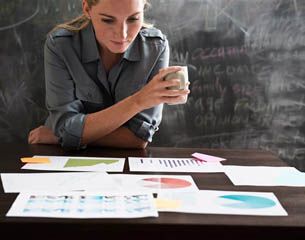
The amount private tenants spent on rent jumped by 11.8% to a record £71.5bn in England and Wales in 2022, according to data from Hamptons, which also shows that rented homes have grown fastest in the UK’s most deprived areas over the last decade.
“A rise in the number of privately rented households combined with record-breaking rental growth has pushed the rent bill up from £63.9bn in 2021 and £42.8bn back in 2012,” says the estate agent, which drew its data from last year’s census.
It shows that the number of households renting privately has grown by 1.12m over the last decade, with the group adding, that “54% of the decade’s growth came from rising rents, while 46% came from the increase in privately rented households”.
The agent points out that this record amount of rent roughly equates to the Office for Budget Responsibility’s revenue forecast for corporation tax between 2022 and 2023 of £73.9bn.
It also says that from 2011 to 2021 the number of households renting privately increased by 151,800 in the 10% most deprived areas of England and Wales, compared to an 80,100 rise in the 10% least deprived areas.
This means that 23% of households in the poorest 10% of the country rent privately, up from 18% a decade ago, well above the 13% that rent in the most affluent areas.
The total amount of rent paid by tenants in the 10% most deprived areas has more than doubled over the last decade, increasing 102% from £2.7bn in 2012 to £5.4bn last year.
The firm adds: “Overall, around 60% of privately rented homes are found in the 50% least affluent areas. While homeownership rates fell across the country over the last decade, generally they held up more strongly in the most affluent areas.”
Last year, the average rent on a newly-let home in the UK ended the year at £1,216 per calendar month in December, 7.7% up on the same period a year ago.
“This means that the average tenant moving home will now be paying an extra £1,044 in rent each year”, says the agent.
It adds: “The good news for tenants is that rental growth has cooled from its summer peak of 11.5% in May 2022, however, it still marked the strongest annual growth recorded in any December since our records began in 2013.
“A lack of supply continues to fuel rents. While stock levels picked up a little from rock-bottom this time last year, there were still 41% fewer homes available to rent across Great Britain than in December 2019.
“This, coupled with a 6% increase in the number of tenants looking for a new home, has pushed rents up across the country.”
The firm says that Scotland saw the largest jump in rents of any region in the UK for the second month in a row, with annual growth of 11.0% on newly-let properties.
Rent increases on existing tenancies in Scotland have been effectively banned by the Scottish government since September, “which means that landlords are increasingly relying on the open market to raise rents.
The group points out that Scotland also saw the biggest fall in the number of homes available to rent.
“There were 53% fewer homes available to rent in December 2022 than in December 2019, meanwhile there were 38% more would-be tenants looking for somewhere to rent,” it adds.
Hamptons head of research Aneisha Beveridge says: “Growth in the private rented sector over the last decade has come on the back of fewer younger people buying their own home, particularly in the less affluent areas.
“While tighter mortgage lending criteria introduced following the financial crash has reduced the number of borrowers struggling to make their mortgage payments, it has also put homeownership beyond reach for some people on below-average incomes with small deposits.
“There has been an array of homeownership schemes over the last decade. And while they’ve helped hundreds of thousands of people onto the housing ladder, typically the biggest beneficiaries have been more affluent tenants. Higher interest rates are likely to exacerbate the divide between more and less affluent tenants further, putting mortgage payments for lower earners with limited savings out of reach.
“Last year was a record-breaking year for rental growth. But even so, rents have failed to keep pace with wider inflation, and indeed landlords’ rising costs. With the cost-of-living crisis hitting tenants particularly hard, rental growth seems to have settled at a new pace, hovering around the 7% mark for the fifth consecutive month.
“While we may see the rate of growth soften a little more in the coming months, rents are still likely to rise around 5% in 2023 given the lack of homes available to rent and inflationary pressures on landlords.”



